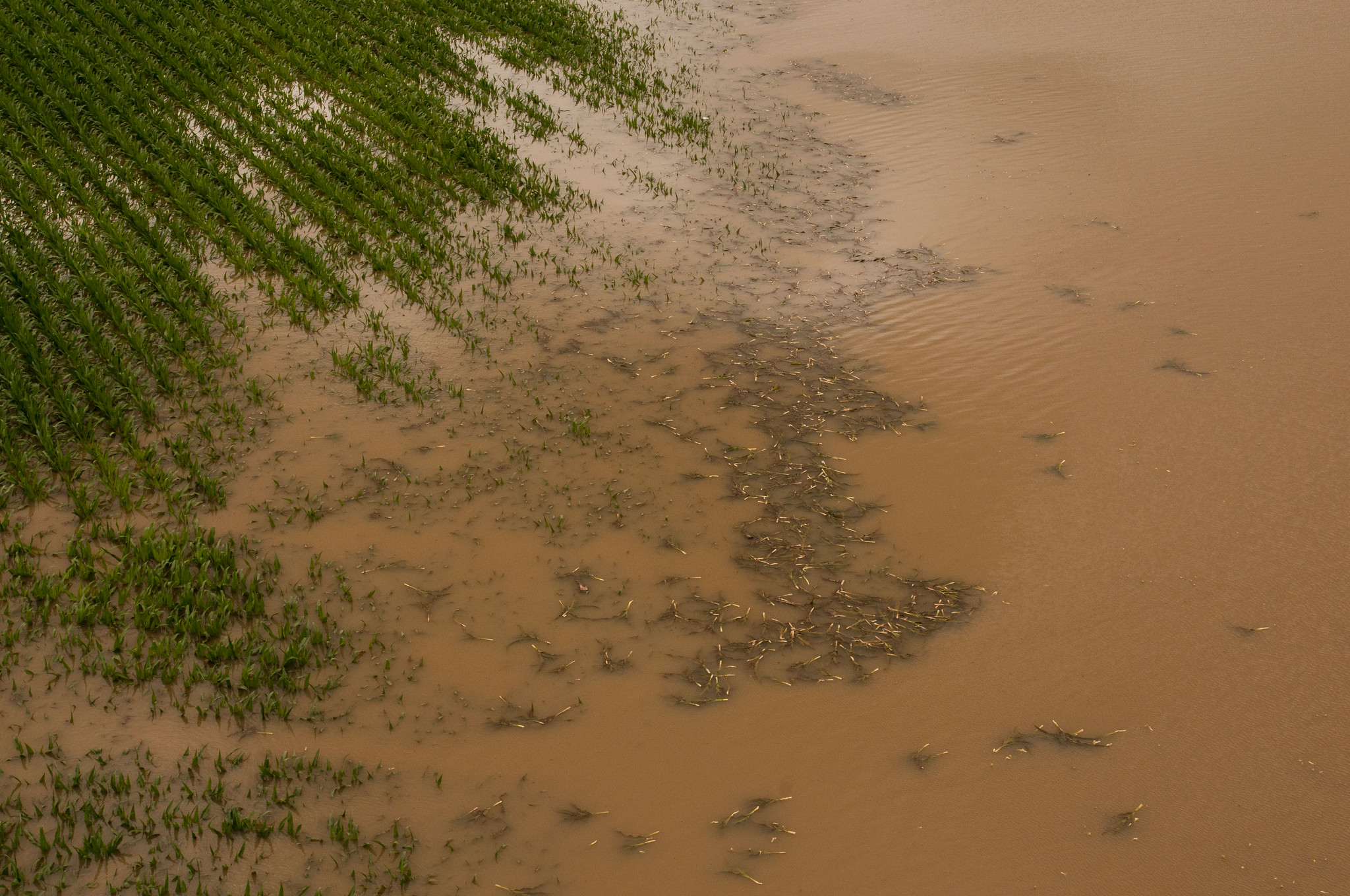From the Field
Quantifying the Risk Reduction Value of Soil Health
Diversifying crop systems can reduce risk of hazards like floods and extreme heat. With grants from USDA and FFAR, Tim Bowles and colleagues are working to quantify that risk reduction and bring the dollar value back to farmers.

In the insurance industry, low-risk practices are typically rewarded. A clean driving record equates to a lower premium. Non-smokers can save money on health insurance. This rule hasn’t always applied in crop insurance.
Farming is indeed a risky endeavor. Floods and heat waves can wipe out crops. Prolonged droughts can strain water supplies, while climate change is increasing weather severity and variability. One way to protect a farm from these hazards, studies have shown, is by adopting soil health practices. Diversifying cropping systems — such as through rotating multiple crops and adding cover crops — can improve soil health, reduce the vulnerability of yields to severe weather, and overall mitigate risk to the farm.
However, crop insurance and agricultural lending, two industries that value risk in agriculture, do not consider the risk reduction of diversified farming systems when they determine insurance premiums and loans.
“If regenerative agriculture is less risky, then risk mitigation should be valued and passed on to farmers in the form of reduced premiums for crop insurance,” says Tim Bowles, Assistant Professor of Agroecology in the Department of Environmental Science, Policy, and Management (ESPM) at UC Berkeley and a Co-Associate Faculty Director of the Berkeley Food Institute (BFI).
As it stands, the current crop insurance system favors less resilient, simplified crop rotations that end up costing taxpayers more in payouts, while risk remains a major barrier to farmers transitioning to more diversified systems. In order for insurers and lenders to value the risk mitigation of diversified farming practices and pass that dollar value back to farmers, they need reliable data. That’s where Bowles and his colleagues come in.
This summer, a research team consisting of Bowles, ESPM computational ecologist Perry de Valpine, statistician Frederi Viens from Rice University, agricultural economist Lawson Connor from the University of Arkansas, and Aria McLauchlan of the nonprofit Land Core has received two grants to conduct a data-driven valuation of the risk mitigation of improved soil health. The grants have been awarded by the US Department of Agriculture’s Agriculture and Food Research Initiative and the Foundation for Food and Agriculture Research (FFAR).

The current crop insurance system favors less resilient, simplified crop rotations that end up costing taxpayers more in payouts as climate change increases the severity of weather hazards like floods and droughts. USDA photos by Lance Cheung
The USDA grant is funding $800,000 over three years to understand how diversifying crops reduces risk during stressful weather conditions, and to translate that data into actuarial and economic information that can inform the valued benefits of risk mitigation. To accomplish this, the team will build a dataset spanning a million farm fields across nine states and two decades in the US Corn Belt. This dataset will illustrate the impact of crop rotation and cover cropping on corn and soybean yields in various weather and soil conditions — and provide the foundation for actuarial models to test risk profiles under different diversification practices and weather.
“This research will provide a proof of principle that, one, more diversified cropping systems actually do reduce risk, and that, two, this risk reduction can be quantified,” says Bowles.
FFAR has awarded the team a $715,611 Seeding Solutions grant, with matching funds from the Paul and June Rossetti Foundation, Mighty Arrow Family Foundation, JM Kaplan Fund, Great Island Foundation, and Records-Johnston Family Foundation for a total of $1,449,611. This grant, led by soil health policy nonprofit Land Core, will focus on developing the workable model to enable an insurer or lender to visualize the data. The Eric and Wendy Schmidt Center for Data Science & Environment at UC Berkeley will also be involved in developing the model, while Compeer Financial, a lender, insurer, and third largest farm credit system cooperative in the US, will provide an industry perspective on the tool’s usability.
“If regenerative agriculture is less risky, then risk mitigation should be valued and passed on to farmers in the form of reduced premiums for crop insurance.”
This research stems directly from a roundtable discussion and report published by the Berkeley Food Institute in 2020. In June 2020, BFI and the Center for Law, Energy, & the Environment at the UC Berkeley School of Law convened farmers, policy experts, investors, and academics in a virtual roundtable to discuss strategies to ease the transition to regenerative agriculture. The roundtable resulted in a report written by graduate student researcher Fiona McBride titled “Redefining Value and Risk in Agriculture.” The report outlines a series of recommendations, including reforming crop insurance and redefining risk to reflect the benefits associated with regenerative practices.
According to Bowles, pricing risk reduction can present a significant, data-driven opportunity to help farmers transition to diversified farming practices, without having to rely on new markets, like carbon markets, or finding new funding sources. “Valuing the risk mitigation of more diversified systems can unlock potential sources of funding for transitioning farmers,” says Bowles, “by leveraging an existing market for risk.”